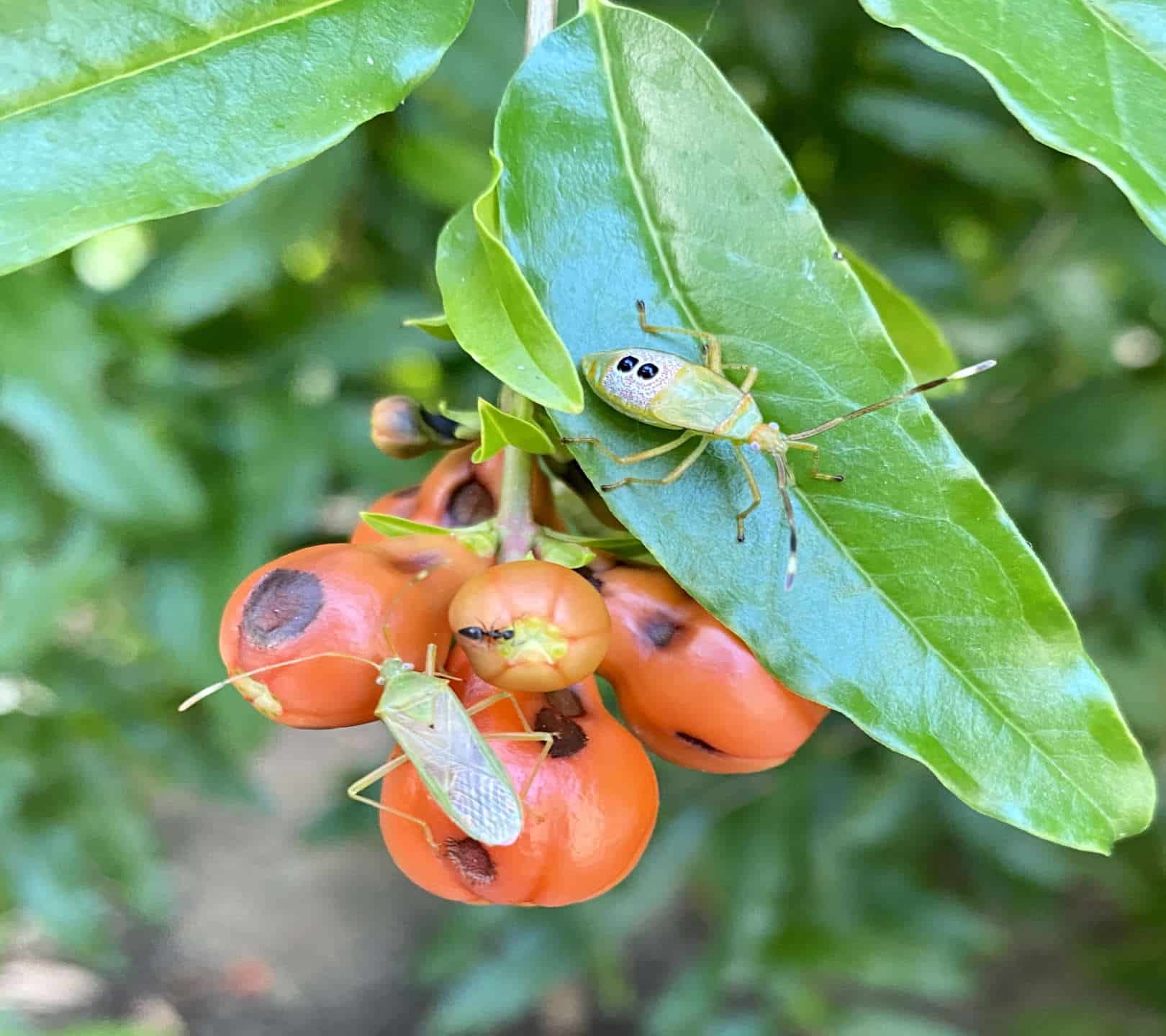Why they are a Pest
Both adults and nymphs pierce the skin of fruit, excreting an enzyme that breaks down the fruit cells and enables the bug to suck up resultant liquid. Often the fruit will drop when they attack small, immature fruit but larger fruit will remain on the tree but have brown lesions on the seed and small black pin pricks on the inside of the skin.
They feed on fruit, flowers and young shoots of fruiting plants. They are able to feed on hard skins and the shells of nuts as they secrete enzymes that break down these surfaces as they feed.
They are a particular pest of avocados, but will also attack guavas, macadamia nuts, pecan nuts, mangoes, custard apples, lychee, passionfruit, papaya (pawpaw), citrus, grapes, figs, cashew as well as other tropical and subtropical fruit trees.
In avocados they feed mainly on green immature fruit.
Damage caused can be a puckering effect where the bug has fed on the young avocado fruit and a pimple effect where fruit has been pierced at a later stage. In thin skinned varieties this can cause severe cracking in the skin rendering the fruit unsalable for the commercial farmer. Where the fruit has been stung the fruit develops a hard lump in the flesh.
They are a relative long-lived bug, very quick moving and can do a lot of damage even if in low numbers.

